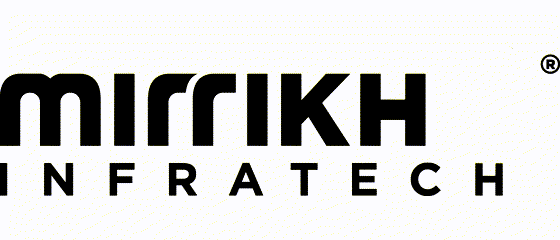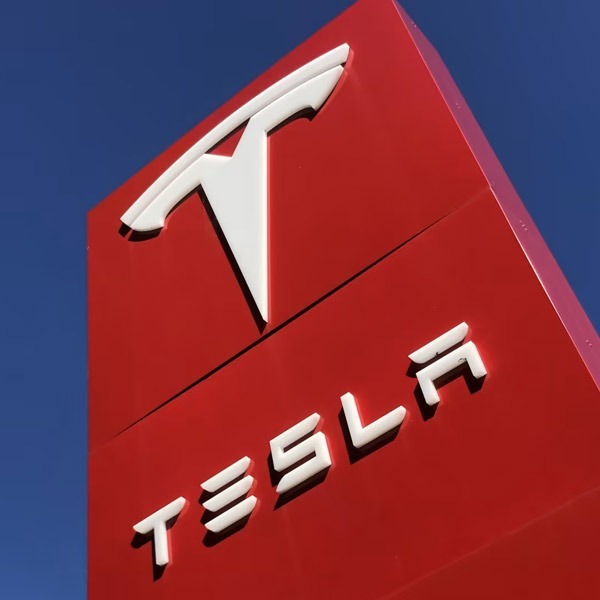The smart city infrastructure India movement is a big step toward building communities that are environmentally friendly, efficient and use technology. India’s Smart Cities Mission improves the quality of life for its citizens by combining high-tech solutions, energy efficiency and basic infrastructure. Dholera Smart City is one of the most advanced models leading this change. It is a pioneering example of infrastructure development, innovation and digital governance.
Understanding the Smart Cities Mission in India
Prime Minister Narendra Modi’s government in India started the centrally sponsored Smart Cities Mission. Its goal is to support inclusive growth make sure people have a good quality of life and promote long-term growth in certain Indian cities. Managed by the Ministry of Housing and Urban Affairs the program supports state governments and urban local bodies through a special purpose vehicle (SPV) structure to coordinate projects efficiently.
This national program’s main goals are to improve basic infrastructure like solid waste management, water supply, public safety and energy efficiency. It also aims to use data analytics, the Internet of Things (IoT) and digital connectivity to make people’s lives better.
What is the Smart Cities Mission in India and what are its main goals?
The Smart Cities Mission aims to transform India’s statutory towns into modern, resilient & sustainable ecosystems. Its goals include:
- Building up the basic infrastructure and improving people’s quality of life through high-tech solutions.
- Promoting intelligent transport management systems, automatic vehicle location & CCTV surveillance cameras to enhance public safety.
- It also wants to make sure that solid waste management is effective that water supply networks are better and that land use planning is better.
- Keeping cultural heritage alive making places for people to have fun and protecting the environment for the long term.
The central government is working on making smart cities that are innovative, inclusive and sustainable with more than ₹2 lakh crore in funding.

Model for Comprehensive Development
Dholera is an example of smart city infrastructure India and is one of the country’s biggest planned greenfield projects. This city’s mission project which is in Gujarat uses high-tech roads, solid waste management systems and IoT-based connectivity to make a community that can support itself. The government of India and state governments have invested significantly in building a city that aligns with smart city development objectives and urban planning standards.
Dholera’s planning makes sure that everyone can benefit from development. Residential and industrial areas are linked by urban infrastructure that supports long-term growth.
Digital Wayfinding and Smart Signage Systems
Digital wayfinding solutions are a key part of Dholera’s smart city proposal. These interactive systems use IoT to help people move smoothly from one area to another in cities. Smart signage technology makes it easier to get around and connect with others.
Digital kiosks offer real-time transport information smart billboards communicate community alerts & mobile navigation platforms integrate with wearable devices to provide users with real-time directions.
Cloud-Based Data and Connectivity Networks
A cloud platform connects every element of Dholera’s network enabling data analytics to optimize traffic management, solid waste collection & water supply systems. This high-tech, data-driven method helps build infrastructure while cutting down on operational inefficiencies.
The system fits with the goals of the Ministry of Urban Development which makes Dholera an example of a smart city in India.
Enhancing Quality of Life Through Smart Infrastructure
The main goal of Dholera is to make people’s lives better. It shows what the high-tech city initiative wants to do: manage waste well, build high-tech roads, make sure the water supply is reliable and make public safety systems easy to use.
Every part of the project—from recreational spaces to residential areas—contributes to a sustainable environment and comprehensive development that aligns with national goals.

Integrating Energy Efficiency and Sustainability
Dholera’s vision for a high-tech city in India is based on sustainability. Through energy efficiency solar power & eco-friendly materials, the city reduces environmental impacts while maintaining growth. Our dedication to a cleaner, greener future is shown by solar-powered digital signboards, waste-to-energy systems and automatic lighting control.
In addition, the region promotes a sustainable environment by encouraging green construction techniques, rainwater harvesting and waste recycling. Buildings are designed to use less energy by maximizing ventilation and lowering heat load. High-tech meters and sensors let people keep an eye on how much energy they use which helps them save money and protect the environment in the long run. Dholera’s approach shows how high-tech solutions can improve the lives of its residents while also supporting environmental goals and powering the city’s infrastructure.
Public Safety and Intelligent Systems
CCTV cameras, automatic vehicle locations and high-tech transport management systems all make security and safety better. These technologies make urban development more efficient by allowing for real-time response. An integrated alert system helps keep people safe and makes communities stronger which is good for everyone.
Smart lighting and connected emergency response centers are also part of India’s larger smart city infrastructure India network. They make sure that help comes faster in an emergency, that roads are safer and that crowds are managed well during big events. The Ministry of Urban Development has said that this integration is an important step toward making urban areas that are safe, welcoming and strong, and that meet global standards for high-tech city development.
Governance and Implementation Model
The special purpose vehicle model makes sure that the central government, state governments and urban local bodies all work together smoothly. This governance structure makes sure that high-tech city projects are carried out properly in line with the guidelines set by the Ministry of Housing and Urban Affairs.
Each SPV runs projects under the Smart Cities Mission in a way that is open and honest making sure that core infrastructure is built quickly and effectively. This coordination helps build infrastructure makes strong public-private partnerships possible and makes sure that resources are managed better. This kind of collaborative model builds trust between citizens and the government which is how the Indian government sees governance in the future.

Economic Opportunities and Infrastructure Growth
Through high-tech city infrastructure India, Dholera has become a magnet for industries in renewable energy, aerospace and technology. The city planning promotes private investment while keeping public services. Businesses can grow with core infrastructure, data analytics and connectivity tools.
Dholera’s smart city mission also integrates industrial parks, residential areas & recreational spaces, providing a decent quality of life for residents and workers alike. With the central government’s focus on sustainable expansion the city has attracted global companies to invest in long-term urban infrastructure projects that balance innovation and inclusivity.
Cultural Heritage and Recreational Planning
Dholera is moving forward with technology but it also keeps its cultural heritage and adds parks and other recreational areas to its cities. These green areas are good for health, socializing and the environment. Community parks, open plazas and waterfront promenades are examples of inclusive development that combines old and new ideas.
This balance makes sure that people have a good quality of life that honors both the past and the future of a smart city project. Dholera’s city planning protects historic sites while turning unused land into public spaces that fit with the city’s overall development goals.
Intelligent Mobility and high-tech roads
Dholera’s high-tech roads have IoT sensors and systems for keeping an eye on traffic and lights that use less energy. Digital monitoring makes sure that the high-tech roads and the water supply system will last for a long time. These new ideas make people safer, shorten travel times and make life better in general.
Real-time traffic optimization reduces congestion and emissions by using high-tech transport management systems and automatic vehicle location. This approach shows how India’s high-tech cities are moving toward mobility solutions that are seamless, connected and long-lasting.
How has the Smart Cities Mission impacted urban development in India?
The Smart Cities Mission has improved the quality of life of citizens by focusing on digital governance, efficient waste management and sustainable development. Cities like Dholera, Pune and Surat have become models for other Indian cities.
What are the biggest challenges faced in implementing smart city projects in India?
The main challenges include funding gaps, limited public awareness and lack of coordination between urban local bodies and state governments. However with SPVs and central government support, progress continues steadily.

Role of Artificial Intelligence and Generative AI
AI and generative AI in urban planning is transforming high-tech city projects by forecasting needs and optimizing land use. AI-powered data analytics can help forecast traffic make waste management easier and make emergency response systems better. These high-tech solutions make urban planning predictive rather than reactive ensuring that every part of Dholera’s smart city infrastructure India contributes to long-term sustainable development.
Collaboration Between Central and State Governments
The central government works closely with state governments and local governments in cities to make changes. The Ministry of Housing plays a pivotal role in providing guidance and funding ensuring that urban affairs remain coordinated under one national strategy.
Recent Developments and Progress Across India
Recent reports say that the smart cities India program has finished more than 6,000 projects including big ones in Uttar Pradesh, Tamil Nadu and New Delhi. These projects are about managing solid waste, getting water, building cities and high-tech transportation. The Smart City Mission wants to make life better for everyone and each city plays a part in that.
Future of smart city infrastructure India
The future of smart city infrastructure India lies in scaling models like Dholera across the nation. With a growing focus on sustainable development, energy efficiency & inclusive urban planning, India is moving toward a connected, data-driven ecosystem.
The government keeps pushing for the smart city initiative to grow and future investments will be aimed at making the city more developed and safer for everyone. These efforts will further strengthen India’s reputation as a global leader in urban infrastructure transformation.
Conclusion: smart city infrastructure India
Dholera Smart City represents the evolution of smart city infrastructure India, combining high-tech solutions, energy efficiency and core infrastructure to deliver a quality of life unmatched by traditional cities. Dholera is making India more connected and sustainable with help from the Smart Cities Mission, state governments, and the central government.
Through waste management, recreational planning, high-tech roads & public safety, Dholera has set new benchmarks for urban planning and sustainable development. Its success ensures that the dream of building 100 smart cities is not just an idea but a reality shaping the nation’s future.





